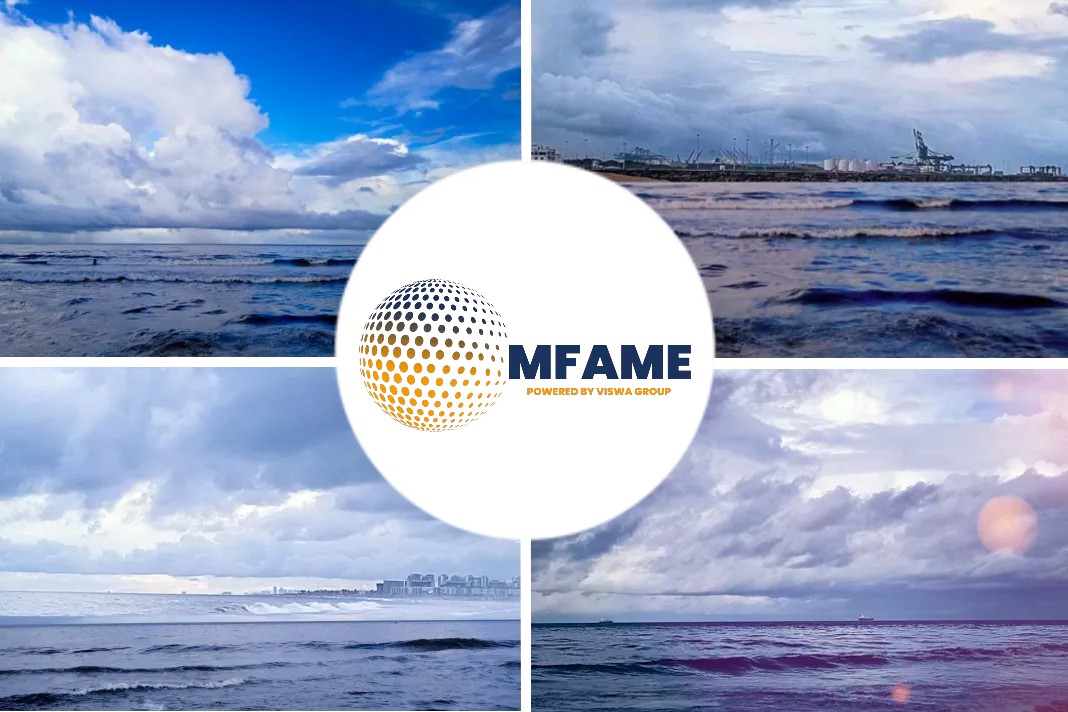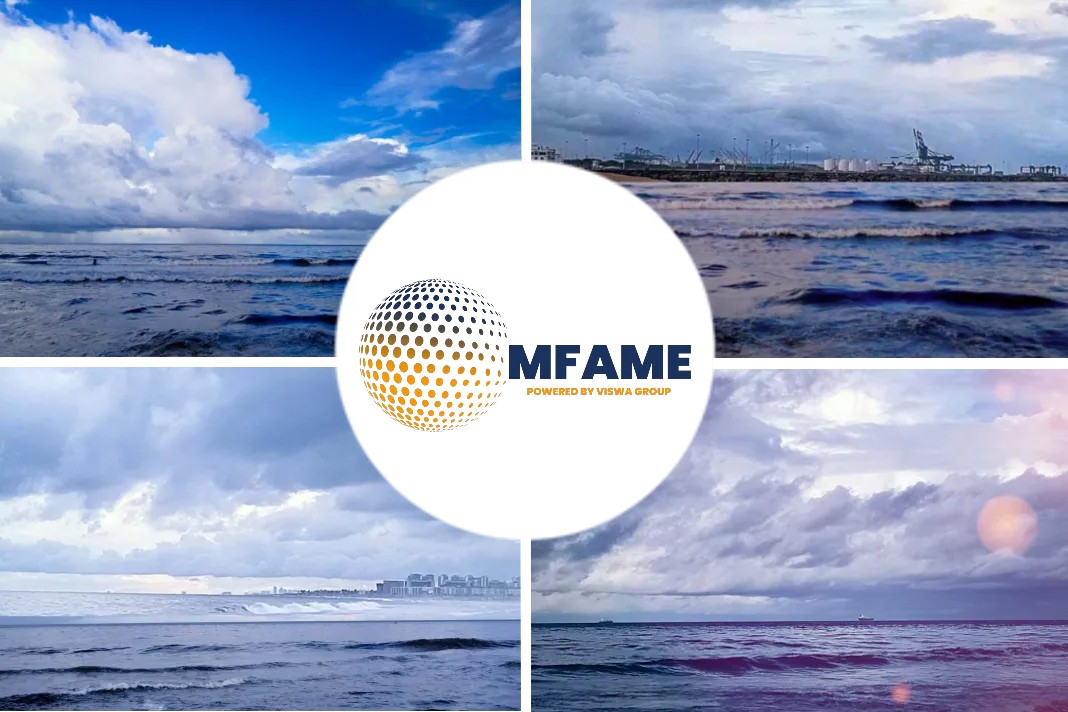- Novatek’s new Arc7 ice-class LNG carriers will require thermal-oil heat exchanger systems that can achieve a massive turnaround in -52C outside air.
- The Netherland’s Heatmaster is putting the final touches to a compact but powerful, closed-loop thermal-oil heat exchanger system destined for five Arc7 ice-class LNG carriers.
- These LNG carriers are under construction at South Korea’s Samsung Heavy Industries (SHI), under a subcontract from Russia’s Zvezda Shipbuilding.
- Capable of heating outside air from -52C to +5C as the carriers ply the Northern Sea Route in the Arctic circle.
- The design of the system stretched the engineering expertise of the Rotterdam-based group.
According to a recent news article published in Riviera, heat exchangers, a hot item for Novatek ice-class LNG carriers are required.
Three exchangers
Each of the three exchangers packs a capacity of 10 MW, with unusually big pipes up to 350 mm in diameter and specially designed valves. The system was crammed into a shell of over 1 m-diameter, occupying a limited space in the engineroom powering the 172,000-m3 carriers. Thermal oil was the only viable option because it does not freeze, explained global sales director Pieter Borg.
“The engineering has been finalised and the delivery of the first heat exchanger – the biggest we have ever done – will be made in early 2021,” said Mr Borg. “The installation will take some time, but we are confident it will go smoothly.”
The challenge for Heatmaster
The challenge for Heatmaster was not so much in the technology (“we specialise in thermal-oil, closed-loop heat exchangers”), but in shrinking the system into a confined space. “The pipes have to be very big to take all the thermal oil around the vessel and heat up the ventilated air from outside,” Mr Borg said. “Our company spent a lot of time in the design and engineering phase together with Samsung. Together we engaged in an iterative process to reach the optimal design.”
Heatmaster’s biggest contract
As Heatmaster’s biggest contract in the company’s 17-year-old history, it had an unusual element.
For servicing purposes, the commissioning engineers had to be Russian nationals so they could be admitted to restricted areas for any repair and maintenance work on the systems.
Heatmaster has stationed two of its engineers in Russia, one in St Petersburg and one in Moscow, ready to fly to otherwise no-go areas at short notice.
Novatek contract
The Novatek contract grew out of Heatmaster’s long experience with the extremely low temperatures of the Arctic, notably with heating systems for ballast water for a wide variety of vessels, such as OSVs, passenger ships, dredgers and roros. “Ballast water cannot be allowed to freeze or the ship’s hull will crack open,” explained Mr Borg. “And you cannot use thermal oil for ballast water heating because there could be an oil spill when the heating coils get damaged. That can be avoided by changing the heating medium to water glycol.”
Water-glycol circulating system
Therefore, Heatmaster designed a water-glycol circulating system for this purpose. It is still a closed-circuit system using pumps, valves and heat exchangers. “We have delivered similar water-glycol systems for heating void spaces around LNG fuel or cargo tanks in several projects”, added Mr Borg. “Our products can be applied to many different ship types sailing all over the world.”
With the first Arc7 vessel due for delivery at the end of 2021, Heatmaster will be busy on the contract well into 2022.
Meantime, the humble boiler, one of the most neglected technologies onboard ships, continues to be developed for the era of LNG-fuelled vessels, as they are an especially important component on LNG carriers where loss of gas is a key factor.
Japan’s Volcano group
In early 2020, Japan’s Volcano group unveiled the MCS-GCU, a more powerful gas combustion unit (GCU) model that boosted up to 1,000 kg/h for treating boil-off gas in LNG-fuelled vessels. In a release, Volcano noted the technology is intended to “meet the request from current shipbuilding projects of LNG-fuelled vessels, including bunkering vessels.”
Parat is booking orders
Elsewhere, innovative Norwegian boiler manufacturer Parat is booking orders for retrofits and newbuilds for its latest LNG-friendly technology.
Parat will install horizontal smoketube boilers on three ships undergoing conversions over the next three years. After-sales manager Geir Nygaard, said: “The MSH model has a well-dimensioned furnace and works perfectly with the LNG burner and the flame characteristics of LNG.”
With a capacity of 3,000 kg/h, the fully automatic system is designed to function in an unmanned engineroom, operating with electronic controllers and electric/pneumatic actuators. It is fully controlled from a touch screen. Parat has found that cruise ships are a ready market, as they replace tired boilers with LNG-burning models.
“For smaller vessels, electrical boilers are a good solution,” Mr Nygaard said. “They can use generators to run the boilers if the demand for heat is not that great. Also, they have the advantage that they can be run off shore power.”
Demand for Parat’s electrical
Hence the demand for Parat’s electrical, low-voltage boilers. In late 2019 the world’s first hybrid wellboat, built by Tersan Shipyards, was launched with one of the group’s 500-kW electric boilers along with expansion tanks, pumps and accessory equipment.
Designed by NSK Ship Design, the wellboat is powered by LNG and a large battery pack and is being used to transport live fish for owner Nordlaks. And in early 2020, Parat followed up by supplying a low-emission hot water delivery system for a second, hybrid-powered wellboat, along with another electric boiler.
The Flekkefjord-based group prides itself on coming up with bespoke configurations, according to the clients’ needs. “We are flexible on design and we can provide complete heating systems tailor-made for retrofits or newbuilds,” explained Mr Nygaard.
Retrofits and their challenges
Retrofits however, present their own challenges. Parat’s engineers are routinely required to design boilers with exactly the same outer dimensions (but different technology inside) as the old one so they can be installed into the same available space, barring minor modifications to, for instance, connections.
But some things never change with boilers. They are typically the most neglected technologies on maintenance schedules. As the UK Hydrographic Office has warned, “marine boilers are one of the most ignored machinery systems onboard ships.”
Did you subscribe to our daily newsletter?
It’s Free! Click here to Subscribe!
Source: Riviera





















Hi are using WordPress for your site platform? I’m new to the blog world but I’m trying to get started and create my
own. Do you need any html coding expertise to make your own blog?
Any help would be really appreciated! I saw similar here: Najlepszy sklep
I do agree with all the ideas you’ve offered to your post.
They are very convincing and can certainly work.
Still, the posts are too short for beginners.
May just you please prolong them a little from next time?
Thanks for the post. I saw similar here: dobry sklep and
also here: najlepszy sklep